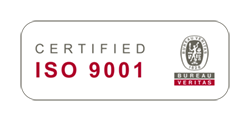- Solutions
- Innovation
- Software
Get Aimsun Next
Use Aimsun Next
About Aimsun Next
- About
Demand Responsive Transport: flexible tools for planning and operational solutions

Athina Tympakianaki
Senior Scientific Researcher at Aimsun

Demand Responsive Transport (DRT) solutions are nothing new in developed countries. DRT services have been around for decades, often provided as public transport service solutions in areas of low passenger demand, where regular public transport is unavailable or may not be financially viable. Recent technological advancements have greatly enhanced DRT services, which have become more efficient due to the use of transport telematics that provide flexibility in booking the service, route planning and ability to serve high demand. Furthermore, from a social perspective, modern DRT services are inclusive in the sense that accessibility can be ensured for people with mobility difficulties.
In Europe, DRT services are gathering momentum, especially in medium and small-sized cities and low-density suburbs of large metropolitan areas. DRT, also known as Bus On Demand or Microtransit, allows the provision of public transport service through flexible routes and schedules, based on actual demand collected from users through digital or other communication tools. A concept widely known and exploited for many years in rural areas (mostly based on telephone calls and manual routing of the services), has the potential to solve accessibility to urban low-demand areas thanks to the digitalization of public transport and mass adoption of mobile phones.
Nevertheless, several challenges and barriers limit the adoption of DRT in European cities. A big challenge in deploying a successful and profitable DRT solution is to make the service attractive: demand is often low for such services, implying little-to-no profitability for transport authorities and operators. In the case of public service, authorities must often subsidize the service to guarantee a minimum return of investment to the operator. Moreover, there is a knowledge gap and a lack of planning tools for Public Transport Authorities (PTAs) when implementing DRT services: design criteria are often estimated on a case-by-case basis and modified continuously once the service is in operation.
The MultiDEPART Project
The aim of the MultiDEPART project, funded by the EIT Urban Mobility program, was to develop a strategic DRT service planning tool and design an assessment framework to evaluate different DRT schemes. The MultiDEPART team developed tools to plan, manage and monitor DRT solutions in Lisbon, Barcelona Metropolitan Area and Thessaloniki, targeting PTAs and facilitating the harmonization and scalability of DRT services across European cities.
Cities aim to address mobility challenges through emerging mobility solutions, such as DRT, to complement and improve the existing public transport service and support areas with low or no connectivity to a public transport system. Furthermore, the operational costs of public transport services can be reduced with the introduction of DRT solutions as they can replace a bus line that may be operating inefficiently, with potentially smaller vehicles depending on the demand, which can be predicted more accurately by the passenger requests that are made through the app.
The strategic planning of such services is critical in providing an attractive and competitive service with the right type of fleet to serve the potential demand for the service. The operational aspects are also important in order to optimize the system’s total cost (for operators and users) and service performance.
The MultiDEPART Methodology
MultiDEPART proposed a methodology to design competitive DRT services involving simulation. Simulating shared mobility services helps to understand how a DRT service can be designed from a strategic as well as operational level point of view.
The methodology is flexible and general enabling:
- Efficient assessment analysis to investigate the planning and operations of DRT services
- Tailoring the detail of analysis to the input data availability and needs of each city
The project proposes three levels of analysis, which can be adjusted to the scope, data availability and needs of the cities and operators. Levels 1 and 2 address the specifications for the design variables at the strategic level (Level 1) and operational level (Level 2), for deriving preliminary transportation planning design and costs of future DRT services. The analysis is made through continuous approximation models that are based on characteristics of the region, some assumptions about the behaviour of these characteristics, and geometric probability. Level 3 involves a transport simulation framework for modelling the transport system of the selected city based on the obtained results from the operational and strategic schemes.
The DRT design tool outputs will be of great importance as basis for preliminary understanding for stakeholders and cities before making decisions. Finally, the financial sustainability of the services is assessed and the trade-offs between costs of users and cost of operators are weighted. Adequate Key Performance Indicators (KPIs) are selected for the analysis and comparison of different types and characteristics of DRT services.
Level 1 – Strategic Planning
Level 1 considers more general aggregated characteristics of the city or area in which the services will be deployed and only requires a small amount of input parameters for the strategic planning of a DRT system at an initial level, considering the most fundamental factors that are expected to affect the DRT service performance.
The best DRT design in terms of the layout of the service (stops, routes, departure times) can be identified using this modelling approach. The cost and performance of the system can be described from various KPIs that the model can estimate, such as the fleet size, door-to-door travel times, distance run by the on-demand fleet, vehicle occupancy as well as costs related to both the DRT operator and the users of the service.
Based on these outputs, authorities, municipalities and operators will be able to make their first decisions regarding initial investment and design, for the DRT services to be financially, economically and socially sustainable. Once the DRT service has been planned strategically, the operational stage investigates how the system should function day to day.
Level 2 – Operational Planning
Level 2 consists of a data-driven decision system that requires mobility data for the operational planning of a DRT system. The optimal DRT service design and characteristics obtained from Level 1 are used as input for a more detailed analysis in Level 2. More specifically, Level 2 can be used to identify and quantify parameters that will affect the performance and operational aspects of the DRT service, such as the demand (Origin – Destination) trips, the routes to deploy the service, and the demand coverage (requests that can be served).
The overall system performance is the result of the interactions between the strategic planning decisions and the system’s operational characteristics. At the strategic level, we derive the estimation of long-term parameters such as the service area, fleet size and type of vehicles (taxi, mini-bus, bus), vehicle capacity, the location of stops. The scope of operational level is to quantify the performance of the selected DRT service setup and evaluate its effectiveness.
Level 3 – DRT Service Simulations
Levels 1 and 2 can be used to define the initial DRT scheme strategies and operational schemes. However, to ensure that the modelling assumptions and outputs from the strategic and operational schemes are valid in a complex transport system, where the interaction between vehicles will be important, a simulation analysis is required. Simulation of the transportation systems is valuable in evaluating transport planning applications and interventions; the core advantage of simulation is that different scenarios can designed and analysed in a timely manner and a range of relevant performance indicators can support decisions about new infrastructure, traffic management strategies, or interventions. Transport simulation can be also used to model and analyse the feasibility and performance of the greater transportation system when new shared mobility applications and policies are introduced.
Level 3 of the decision-making tool support analysis of a variety of DRT service scenarios within a coexisting transport system in a more efficient and reliable manner than Levels 1 and 2. Additional data and processing i build a representative scenario of the selected transport system and DRT service in different configurations. Level 3 integrates the strategic planning and operational methods of Levels 1 and 2 with the shared mobility service simulation platform Aimsun Ride. The integration workflow is presented in Figure 1.
Figure 1: Integration framework for fleet planning and operations decisions with the Aimsun Ride simulator.
The integrated framework enables the optimisation, planning, and prediction of the potential impacts and performance of a DRT service through simulation. The three models that constitute Level 3 are the strategic and operational models as well as the Aimsun Ride platform, which is designed as a plug-in inside Aimsun Next traffic simulation software. A suitable interface between Aimsun Ride and the external DRT fleet planning and operational models is implemented to make the interaction between the three models feasible. The first step in the integrated framework is to provide the DRT service planning decisions (output from Level 1) as input to the methods for designing the DRT service operations (Level 2). Subsequently, the service demand (service requests) and optimised supply (i.e., trip plans, fleet characteristics) for the examined DRT service are provided as inputs to Aimsun Ride, mimicking how the DRT system would behave in a real-life traffic network and predicting how the vehicles in the network will affect the travel times of users and the average speed of vehicles in the network. Specifically, the fleet operational algorithms interact with Aimsun Ride in order to execute the requests in a simulation environment according to the optimised trip plans.
A range of KPIs with respect to both the users of the DRT service as well as the service performance are provided from the simulation. With respect to the service indicators, the KPIs that are provided in Level 3 include the kilometres travelled per shared mobility mode, the total travel times as well as the usage of the DRT fleet. The list of KPIs can be extended depending on the needs of a specific use case in terms of the type of impact analysis of system user metrics such as waiting times for each user to be served, or travel times to complete their trip. The number of served and unserved requests can be also collected from the simulation.
The main advantage of the simulation is more reliable predictions and extended KPIs, which are not available in Level 1 and Level 2 of the decision support tool due to the nature and limitations of their methodologies. The estimated KPIs can also be fed back to Level 1 and Level 2 to validate and update assumptions on transport system travel times, distances travelled, etc., in order to find an optimal solution for cities.
Furthermore, the simulation tool provides the flexibility of using different traffic flow resolutions to replicate the network traffic phenomena. Depending on the scope of the application, the desired level of detail in representing the traffic conditions, the input data availability, the network can be simulated at a macroscopic, mesoscopic, microscopic or even hybrid macroscopic-mesoscopic level. Hence, with respect to the network performance KPIs, depending on the network model resolution, different network performance indicators can be provided. For instance, in order to obtain realistic network performance indicators of traffic congestion and queues, a more detailed network model representation of the study area would be best.
Within the MultiDEPART project, the decision support tool has been validated and demonstrated through its application to three case studies: Lisbon, Barcelona Metropolitan Area, and Thessaloniki. Visit the MultiDEPART website for more information.
What are the benefits of adopting such tools in the decision-making process for the deployment of DRT solutions?
The MultiDEPART project provides a user-friendly, flexible decision support tool that cities, operators and decision makers can seamlessly incorporate into their decision-making processes regarding the introduction of DRT service schemes. The tool is equally useful for fist-time DRT implementations and for cities and operators wanting to enhance and extend their existing DRT services.




